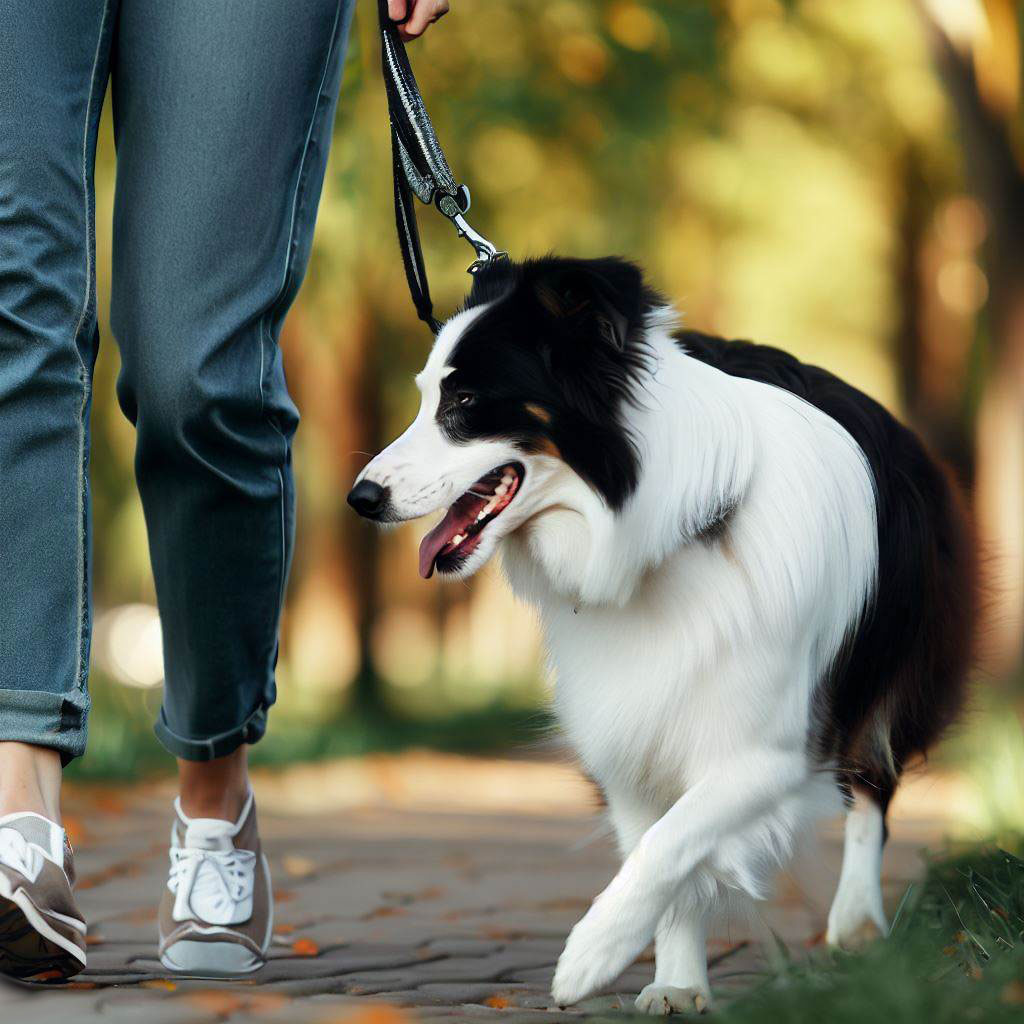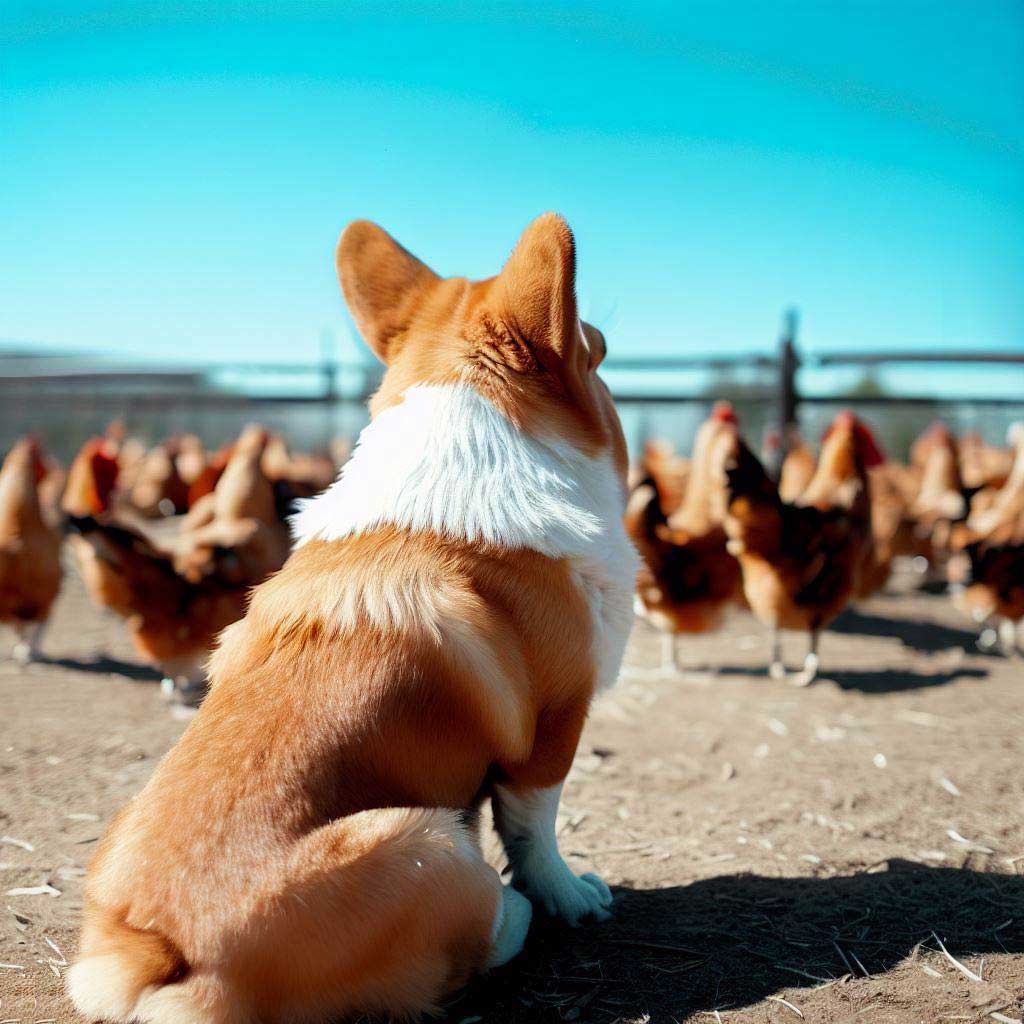How To Litter Box Train Your Dog?
Litter Box Training A Dog: Train Your Puppy To Go Potty with ease. Tips from a dog experts on choosing litter and successful training.
Table of Contents
Introduction
Have you ever considered litter box training a dog? It’s a concept that might initially strike you as odd, but when you delve into its utility, it makes perfect sense. Litter box training isn’t just for our feline friends anymore; dogs, especially those living in urban settings, can benefit immensely from it.
Imagine living in a high-rise apartment where taking your dog out for a quick pee becomes a 15-minute ordeal involving elevators, busy streets, and unpredictable weather. Or perhaps you’re in an area where weather conditions, like heavy rain or snow, make outdoor potty breaks less appealing. These are situations where litter box training a dog can be a lifesaver.
Why Choose Litter Box Training?
Convenience:
In the sprawling jungles of urban settings, every minute counts. Those living in high-rises or apartments without easy access to open spaces can attest to the trials of taking their dog out multiple times a day. Litter box training a dog simplifies this. Hence, no more unexpected elevator delays or waiting for Spot to find the perfect patch of grass. Everything your dog needs is just a paw’s step away.
Weather Independence:
How many times have you looked outside, seen pouring rain or blizzards, and wished you didn’t have to take the dog out? Litter box training provides a consistent potty place for your dog, regardless of weather. Whether it’s a sweltering summer day or a freezing winter night, your dog has a comfortable and familiar spot to relieve themselves.
Safety:
Late-night and early-morning walks come with their set of challenges. From potential encounters with nocturnal wildlife to reduced visibility on roads leading to safety hazards, there are numerous risks involved. By litter box training a dog, you reduce these risks, ensuring that both you and your furry friend stay safe.
Breeds Suited for Litter Box Training
While the idea of litter box training a dog seems universally appealing, not all breeds take to it with the same enthusiasm. The breed, combined with individual temperament and age, often plays a pivotal role in how successful the training will be.
What about puppies?
Puppy litter box training irrespective of the breed, can also be challenge due to their relatively short attention spans, just like kids. But with lots of persistence and patience it can be done successfully with potty pads and an indoor potty.
With puppy potty training lots of tasty dog treats are your friend because the window of opportunity to train your puppy can be in very short spurts, literally sometimes. You’ll be amazed at when and where a puppy will just go and do its business.
The best way, which will take lots of persistence, for a puppy is to train it to go after eating their dog food, but note, this can take possibly up to an hour after the meal. We did mention persistence (and patience) didn’t we?! As you train your puppy just keep saying to yourself that there is a light at the end of the tunnel, because there is. Eventually with persistence, your puppy will be trained and all that work will pay off.
Small breeds vs. large breeds:
Small breeds like Chihuahuas, Toy Poodles, and Shih Tzus often adapt better to litter boxes primarily because of their size. The confined space of a litter box is large enough for them to move, turn, and find a spot.
Larger breeds, like Golden Retrievers or Labradors, require larger spaces and might find regular litter boxes restrictive. So if you have a larger dog and are keen on litter box training, you’ll need to invest in a sizable box or even consider creating a custom one.
Adaptability based on temperament and age:
Age plays a considerable role in the adaptability of dogs to new training techniques. Puppies, being impressionable and in their formative phase, often take to litter box training faster than older dogs. They’re learning the world, and with consistent training, a litter box can quickly become their go-to spot.
Temperament, on the other hand, is trickier. Some dogs, irrespective of their age or size, might resist the idea of a litter box. Here, patience and persistence are vital. So with positive reinforcement, even the most stubborn dog can warm up to the idea.
Incorporating litter box training into your dog’s routine doesn’t mean an end to outdoor adventures. It merely provides an alternative, making life easier and more convenient for both of you. Whether it’s the allure of weather-independent potty breaks, safety concerns, or the sheer convenience, there’s no denying the perks of litter box training a dog.
So, as you consider this training for your canine companion, remember it’s not about restricting them but about giving them an additional option—a safety net for when going outside isn’t feasible. It’s an approach that, while unconventional, holds undeniable merits for certain lifestyles and situations.

Choosing the Right Litter Box
Navigating the world of dog products can be overwhelming. So when it comes to litter box training a dog, the first step is selecting the right box. This choice can impact how smoothly the training process goes.
Size considerations based on your dog
Size matters! So it’s vital to ensure your dog has enough space to comfortably move, turn, and find their preferred spot in the litter box. For smaller breeds, a standard-sized box may suffice. However, for larger breeds, you’ll need to invest in larger or even jumbo-sized boxes. Take accurate measurements of your dog’s length and width and aim for a box that offers ample space.
Types: Regular vs. specialized dog potty boxes
While the standard litter boxes designed for cats can work for smaller dog breeds, you might consider specialized dog potty boxes. These come with artificial grass or pads that can mimic the feel of going outside, which makes the transition much easier for your dog.
Material: Plastic vs. disposable
Plastic litter boxes are durable and easy to clean but might hold odors if not cleaned frequently. On the other hand, disposable boxes, often made of recycled paper or other eco-friendly materials, can be a great choice for those who prefer not to clean or for travel purposes. Remember, the choice should reflect both your dog’s comfort and your convenience.
The Best Litter for Dogs
When you’re well into the process of litter box training a dog, it’s essential to remember that not all litters are created equal. The kind of litter you choose plays a role in the success of the training.
Differences between cat and dog litter
While both cat and dog litters aim to absorb and minimize odor, dog litter is generally larger in particle size and designed to handle a dog’s larger urine volume. So using cat litter for dogs can lead to a mess as it may not clump as effectively, given the difference in urine amounts.
Recommendations and popular choices
Several brands specialize in dog litter. Opt for absorbent, non-toxic varieties that are safe for your pup. Pelleted litters made from recycled newspapers or natural materials like pine can be effective. So always consult product reviews and consider your dog’s preference. Simply because some dogs might prefer certain textures over others.
Steps for Litter Box Training A Dog
Training a dog, much like training any other pet, requires patience, consistency, and understanding. So as you embark on this litter box journey, keep the following steps in mind:
Location is Key: Choosing the right spot for the litter box
When you’re litter box training a dog, placement is crucial. As dogs, by nature, prefer a quiet and private spot. Hence avoid high traffic areas in your home and consider placing the box in a corner. Once you’ve chosen a location, stick to it. Changing spots can confuse your dog and hinder the training process.
Familiarizing Your Dog: Initial introduction
Begin by letting your dog inspect the litter box without any expectations. Place them inside and let them sniff around and if they choose to exit without doing their business, that’s alright. This step is about getting them acquainted.
Setting a Routine: Consistency is key
Just like puppies have potty training schedules, maintain a routine when litter box training a dog. Direct your dog to the box after meals, playtime, or when they wake up and over time, they’ll recognize the pattern.
Positive Reinforcement: Praise and rewards
Every time your dog successfully uses the litter box, reward them. Whether it’s verbal praise, a favorite treat, or a short play session, positive reinforcement makes all the difference. This communicates to your dog that they did something right, encouraging repeated behavior.
Cleanliness: Keeping the box clean to encourage usage
A dirty litter box can deter your dog from using it. and dogs, like humans, prefer clean environments. So make it a point to scoop out waste daily and change the litter regularly. A clean box not only promotes usage but also keeps odors at bay.
Incorporating these steps into your dog’s routine and being patient can make the process of litter box training smoother. It might be a departure from the norm, but with the right approach, your dog will adapt, granting both of you a little more flexibility in daily life.
Common Mistakes to Avoid
Litter box training a dog is undeniably a unique approach to managing your canine’s natural needs. While it brings convenience, especially for urban dwellers, there’s a learning curve involved. So as you embark on this journey, be mindful of these common pitfalls to ensure a smoother transition for both you and your furry companion.
Punishing for mistakes
Everyone makes mistakes, including our four-legged friends. Hence remember that your dog is navigating unfamiliar territory when introduced to a litter box. If they have an accident outside the box, resist the urge to scold because negative reinforcement can make the dog associate the litter box with fear or stress. Instead, gently redirect them and offer praise when they do use the box because positive reinforcement will always yield better results.
Choosing a box that’s too small
One of the fundamental aspects of litter box training a dog is ensuring their comfort. A cramped box can deter your dog from using it. Hence, it’s essential to provide enough space for your dog to move around, find their spot, and cover it if they choose to. Especially for larger breeds, an undersized box can be a significant hindrance. Key tip is to always measure and opt for a box that offers room to roam.
Not cleaning the box regularly
Dogs, by nature, are clean animals. A dirty litter box can discourage your pet from using it, leading them to seek alternatives, often at places you’d least prefer. Furthermore, a neglected box can lead to odor issues, making it unpleasant for everyone in the household. So prioritize cleanliness to ensure consistent use and a healthier environment.
Pros vs. Cons of Litter Box Training
When considering litter box training a dog, it’s essential to understand both its advantages and potential drawbacks. This knowledge will equip you to make an informed decision tailored to your lifestyle and your dog’s needs.
Pros:
Flexibility in timing
One of the most evident perks of litter box training a dog is the flexibility it offers. No more hurried walks in inclement weather or setting alarms for odd-hour potty breaks. As a result, your dog has access to their restroom right within the confines of your home.
Safer environment for your dog
Late-night or early-morning walks can pose safety challenges from potential encounters with wildlife to navigating dark streets. With a litter box, these risks are mitigated, hence ensuring a safer environment for your pet.
Suitable for owners with mobility issues
For elderly pet owners or those with mobility challenges, frequent outdoor walks might be strenuous. But litter box training offers a convenient solution, making pet ownership more accessible and enjoyable for everyone.
Cons:
May not be natural for some dogs
While many dogs can adapt to using a litter box, it might not feel instinctual for some, especially those that are used to the outdoors. This can make the training process lengthier and require more patience.
Requires regular maintenance
Unlike natural outdoor breaks where nature takes care of the waste, a litter box demands regular cleaning. So this commitment is crucial to ensure your dog’s continued use and maintain a fresh-smelling home.
Potential odor issues if not cleaned regularly
If neglected, a litter box can lead to unpleasant odors permeating your living space. Hence regular cleaning and choosing the right type of litter can help, but it’s a commitment that cannot be overlooked.
Conclusion
Litter box training a dog presents an alternative to traditional potty training, especially appealing for those living in urban settings. However like any training method, it has its set of benefits and challenges.
The convenience, safety, and flexibility it offers can’t be denied. However, it demands a commitment to regular maintenance and an understanding that, for some dogs, it might not come naturally. Weighing these pros and cons is essential, but remember, the best decision is one that factors in both your needs and those of your beloved canine companion.
Training methods should always prioritize the well-being and happiness of the pet. So whether you choose litter box training or another approach, consistency, patience, and love are the keys to a well-adjusted, happy dog.

FAQs: Litter Box Training A Dog
Is litter box training suitable for all puppy dog breeds?
Litter box training a dog might not be suitable for all breeds, especially larger ones due to space constraints. However, with the right box size and consistent training, most breeds can adapt.
Best dog breeds for litter box training
Smaller breeds like Chihuahuas, Toy Poodles, and Shih Tzus are typically easier for litter box training. Their smaller size and adaptability make them more amenable to this type of training.
Is litter box training a dog a good idea?
Yes, litter box training a dog is an excellent idea, especially for those living in apartments or places with extreme weather conditions. It offers convenience and safety, ensuring your dog can relieve themselves without needing to venture outside.
Is it safe for a dog to use a litter box in the house?
It is safe, provided you choose the right type of litter and keep the box clean. Ensure you’re using dog-safe litter and regularly remove waste to prevent bacterial buildup.
How long does it take to litter box train a dog?
The timeframe varies. Puppies might take a few weeks, while older dogs may require more patience. Consistency is key in ensuring successful litter box training for a dog.
How to litter box train a dog who is older?
Older dogs might have set habits, but with patience, you can succeed. Start by placing their waste in the box to familiarize them with the scent. Positive reinforcement, like treats and praises, can encourage them to use the box.
Can you train a dog to use a litter box and go outside?
Absolutely. Dogs can be trained for both. You’ll just need to set a routine and use commands to differentiate between outdoor potty breaks and litter box usage.
How often should I clean the litter box?
For optimal hygiene and to encourage your dog’s usage, clean the box daily. This ensures a fresh environment and reduces odors.
What should I do if my dog refuses to use the litter box?
First, ensure the box is clean. If that’s not the issue, consider its location. Dogs prefer quiet, accessible spots. Positive reinforcement can also encourage them to use the box.
Is dog litter different from cat litter?
Yes, dog litter is typically larger and more absorbent. While cat litter clumps around waste, dog litter absorbs and dries it out, minimizing odors.
How can I reduce odors from the dog litter box?
Regular cleaning is the best approach. Additionally, consider dog litters designed to control odor, and place the box in a well-ventilated area.
Can I use a cat litter box for my dog?
It’s possible, especially for smaller breeds. However, specialized dog potty boxes might offer better results since they cater to a dog’s specific needs.
How to litter train a puppy indoors
Start by introducing the puppy to the litter box after meals and naps.
Use positive reinforcement when they use the box.
Ensure the box remains in a consistent location so the puppy can easily find it.
Remember, patience and consistency are key.
Can you train a dog to pee and poop in a litter box?
Yes, with consistent training, dogs can be taught to do both in a litter box. The key is to ensure the box is clean and to use positive reinforcement techniques.
What’s better an indoor potty or an outdoor box for a dog?
The choice between an indoor potty and an outdoor box depends on your living situation, dog’s breed, and personal preferences. Indoor potty solutions like litter boxes are great for apartment living, bad weather conditions, and small breeds, while an outdoor box might be more suitable for homes with yards, larger breeds, and owners preferring a more natural potty solution.
Why don’t dogs use litter boxes?
Traditionally, dogs are outdoor animals. Litter box training is a relatively modern concept, and not all dogs may naturally gravitate towards it. However, with training, they can adapt.
Are there any health risks to my dog from using a litter box?
If the box is kept clean, risks are minimal. However, if neglected, bacterial buildup might cause infections. Using the correct type of litter and regular cleaning mitigates these risks.
How can I transition my dog from outdoor potty breaks to using a litter box?
Begin by placing the litter box near the door your dog uses for potty breaks. Gradually move the box to its permanent location, ensuring to praise your dog each time they use it.
How long does it take to litter box train a puppy?
Litter box training a puppy typically takes a few weeks but can vary depending on the consistency of training and the puppy’s temperament. Using positive reinforcement and setting a routine can expedite the process.
How do I train my dog not to use the litter box?
To train your dog not to use the litter box, redirect them to their designated outdoor potty area consistently. Reward them for using the correct spot, and remove access to the litter box gradually.
Is a pet dog litter box expensive?
Dog litter boxes can range in price, with basic models being quite affordable. Specialized or premium options may cost more, but a variety of choices are available to suit different budgets.
What are the best dog breeds for litter box training?
Smaller dog breeds like Chihuahuas, Toy Poodles, and Shih Tzus are typically best suited for litter box training. Their smaller size and adaptable nature make them more amenable to this training method.
What are the benefits of a dog litter box vs pee pads?
A dog litter box can be more environmentally friendly and cost-effective compared to disposable pee pads. Litter boxes also often control odors better and can be a more permanent solution.
Are puppy litter box pellets any good?
Puppy litter box pellets are generally effective as they are designed to absorb and minimize odors. Choosing quality pellets can provide a clean and attractive litter area for your puppy.
Can a small dog be trained to use a litter box?
Yes, small dogs are often ideal candidates for litter box training. Their size and typically adaptable nature make them more suitable for using a litter box compared to larger breeds.
How to make a dog litter box?
To make a dog litter box, you’ll need a shallow, wide container and dog-appropriate litter or turf. Fill the container with the chosen material and place it in a consistent, accessible location for your dog, gradually introducing them to the new potty spot.
Can you get a litter box for my puppy dog for the car?
Yes, there are portable litter boxes designed specifically for car travel with a puppy or dog. These litter boxes are typically compact, easy to clean, and come with secure lids or covers to prevent spills, making them a convenient option for keeping your puppy comfortable during car trips.
Upgrade Your Pet Training Game with Premier Online Courses
Don’t overlook our detailed article, “Best Online Dog Training Courses: Any Dog Will Love,” if you’re looking for expert advice. This essential guide dissects 15 of the highest-rated online courses and narrows it down to the top three that guarantee outstanding results for dogs across all life stages, from pups to elder canines.









